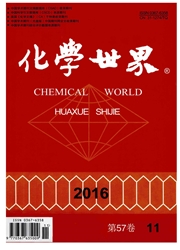

 中文摘要:
中文摘要:
硫化氢中毒机理尚未在蛋白质层面阐明,寻找血液中的蛋白质标识物在临床及法医学上具有重要意义。近年发展起来的液相色谱-质谱技术的定量蛋白质组学(iTRAQ/TMT)技术为筛选生物标识物提供了新的有力工具。采用蛋白质组学方法研究了硫化氢中毒的大鼠模型的结果。大鼠暴露于150mg/m^3浓度受控的硫化氢环境中,时间分别为0、2和4h。收集大鼠血液后,分离血浆并用蛋白质浓缩试剂盒(ProteoMiner)去除高丰度蛋白质,并通过串联质谱标签标记技术和纳流液相色谱-串联质谱(Nano HPLC MS/MS)进行定量蛋白分析。实验采取两组平行重复以确认鉴定及定量结果。在2次重复实验中,共有520个蛋白被鉴定并进行后续生物信息学分析。结果表明:蛋白质组学技术是在蛋白质水平上研究并揭示硫化氢中毒的机理。
 英文摘要:
英文摘要:
The mechanism of hydrogen sulfide poisoning is still unclear at protein level.It is crucial to find potential protein biomarkers in blood both for clinical and forensic purpose.LC-MS based quantitative proteome-iTRAQ/TMT(Tandem Mass Tags,TMT)method has rapidly developed in the last decade and offers a powerful tool to screen potential biomarkers.Here,a rat model of hydrogen sulfide poisoning was designed and established,and a proteomics method was firstly introduced in our study.Hydrogen sulfide was exposed to the rats at a controlled density of 150mg/m~3 with three time periods of 0,2and 4h,respectively.After blood collection,the plasma was separated and treated with ProteoMiner(Bio-Rad)to remove highly abundant proteins.The quantitative protein profiling was performed by TMT-labeling and Nano-HPLC-MS/MS.Two TMT-labeling replicates were tested to confirm the identification and quantitation results.A total of 520 proteins were identified in the two replicates and systematic biology tools were utilized to help us analyze the protein lists.In summary,proteomics technology provides a powerful tool in toxicology research and helps us to reveal the mechanism of hydrogen sulfide toxicity at protein level.
 同期刊论文项目
同期刊论文项目
 同项目期刊论文
同项目期刊论文
 期刊信息
期刊信息
